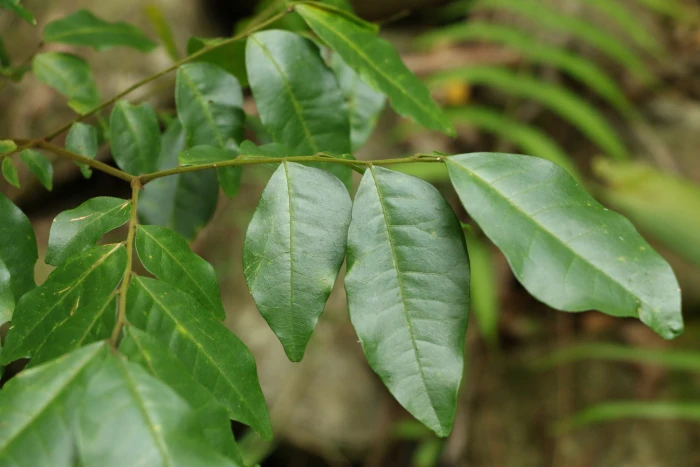Snow-Wood
(Pararchidendron pruinosum)
Snow-Wood (Pararchidendron pruinosum)
/
/

© Greg Tasney
CC BY-SA 4.0
Image By:
© Greg Tasney
Recorded By:
Copyright:
CC BY-SA 4.0
Copyright Notice:
Photo by: © Greg Tasney | License Type: CC BY-SA 4.0 | License URL: http://creativecommons.org/licenses/by-sa/4.0/ | Uploader: gregtasney | Publisher: iNaturalist |






















Estimated Native Range
Climate Requirements for Hamilton, Canada
| This Plant | Your Site | Plant Suitability for Your Location | ||
|---|---|---|---|---|
| • Precipitation | 7" - 168" | 35" | Your precipitation may be insufficient for this plant. Irrigate N" / year. | Irrigate N" / year |
| • High Temp. | 66°F - 98°F | 82°F | Your summer temperatures are normal for this plant. | Excellent |
| • Low Temp. | 39°F - 72°F | 17°F | Your winter temperatures may be too cold for this plant | Too cold |
This plant should grow well at your location with about N inches per year (Y minutes per month) of irrigation.
Summary
Pararchidendron pruinosum, commonly known as Snow-wood, is a small to medium-sized deciduous tree native to the tropical and subtropical rainforests of eastern Australia, from the Shoalhaven River in New South Wales to Herberton in north Queensland, as well as in New Guinea and parts of Indonesia. It typically grows up to 50 feet tall with a trunk diameter of approximately 14 inches. Snow-wood features a distinctive reddish trunk and is adorned with fragrant, fluffy white or greenish flowers that turn yellow as they mature, usually blooming in the spring and summer months. The flowers are not particularly showy but are valued for their unique texture and fragrance.
Snow-wood is noted for its ability to fix nitrogen in the soil, which improves soil fertility and benefits surrounding plant life. It is often used in reforestation projects and as an ornamental tree in large gardens and parks, especially near rivers or streams where it can mimic its natural habitat. In cultivation, it requires moist, well-drained soils and a position in full sun to part shade. While it is not commonly seen in small gardens due to its size, it is appreciated for its ecological benefits and attractive bark. Potential problems include susceptibility to root rot in poorly drained soils.CC BY-SA 4.0
Snow-wood is noted for its ability to fix nitrogen in the soil, which improves soil fertility and benefits surrounding plant life. It is often used in reforestation projects and as an ornamental tree in large gardens and parks, especially near rivers or streams where it can mimic its natural habitat. In cultivation, it requires moist, well-drained soils and a position in full sun to part shade. While it is not commonly seen in small gardens due to its size, it is appreciated for its ecological benefits and attractive bark. Potential problems include susceptibility to root rot in poorly drained soils.CC BY-SA 4.0
Plant Description
- Plant Type: Tree
- Height: 10-30 feet
- Width: 10-20 feet
- Growth Rate: Moderate
- Flower Color: Yellow, Green
- Flowering Season: Spring
- Leaf Retention: Evergreen
Growth Requirements
- Sun: Full Sun, Part Shade
- Water: Medium
- Drainage: Medium
Common Uses
Bird Garden, Butterfly Garden, Hummingbird Garden, Low Maintenance
Natural Habitat
Native to tropical and subtropical rainforests, often near rivers
Other Names
Common Names: Snow Wood, Tulip Siris, Monkey’s Ears, Tanjong
Scientific Names: Pararchidendron pruinosum, Albizia pruinosa, Feuilleea pruinosa, Pithecellobium pruinosum
GBIF Accepted Name: Pararchidendron pruinosum